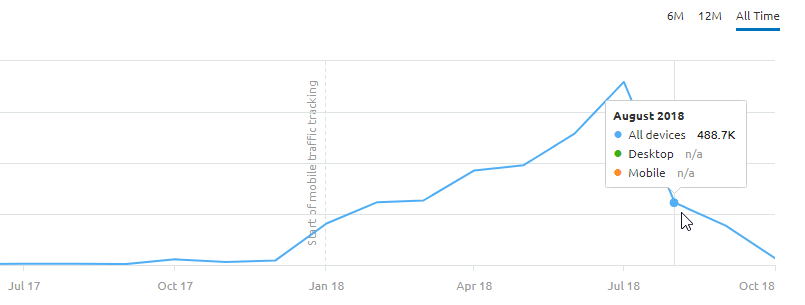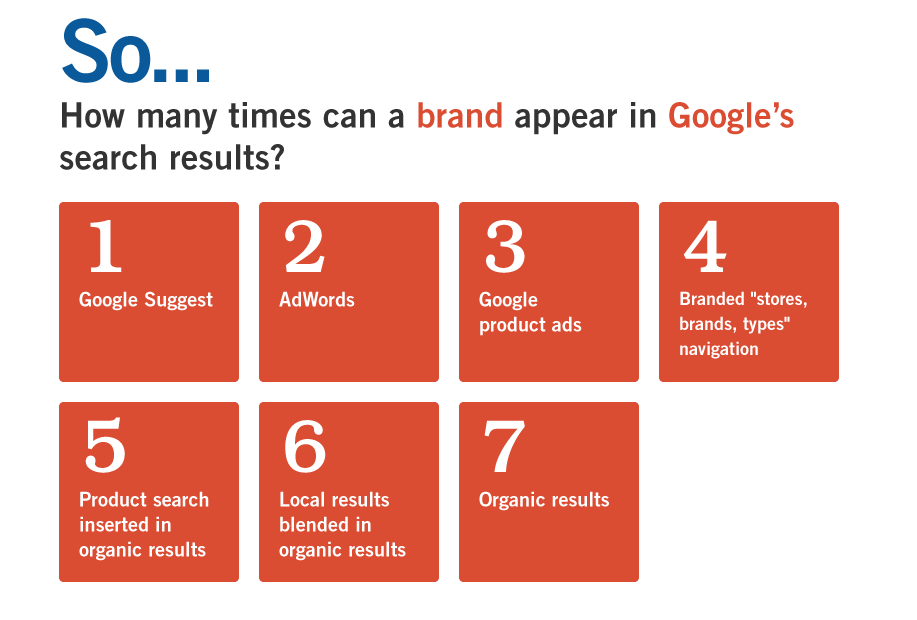E-A-T YOUR WAY TO THE TOP OF GOOGLE

What Is E-A-T?
E-A-T stands for, “expertise, authoritativeness, and trust,” and has become a critical part of any digital marketing campaign.
E-A-T was introduced as a part of the Medic core update, affecting websites in August 2018. In particular, the Medic core update targeted sites that provided information that could be harmful or dangerous to one’s health, well-being, or finances if the information presented was incorrect or low-quality (medical, legal, electrical work, car maintenance, gas line repair, etc.)
These types of sites are commonly being referred to as “Your Money Your Life” sites, or YMYL sites.
SEMrush sheds some light on the characteristics of a YMYL site:
- Shopping or financial transaction pages
- Pages that offer financial information, e.g., investment or tax information
- Pages that offer medical information about specific diseases or conditions or mental health
- Pages that offer legal information about topics like child support, divorce, creating a will, becoming a citizen, etc.
When you stop to think about it, this makes perfect sense.
If you were looking for a topic, you wouldn’t want low-quality results, would you?
E-A-T places emphasis on high-quality content over quantity.
Learn the quality guidelines before we dive into the details of E-A-T.
A History of Algorithmic Updates
Did you know that Google is constantly adjusting their algorithm? In fact, Google updates their algorithm 500-600 times per year. Many of these changes often go unnoticed, as they’re minor and don’t significantly impact search results. However, when Google makes a major change, SEO’s and website owners alike stop and take notice. In the screenshot below from SEMrush, you can see an example of a website that was affected by the Medic core update.  If you’re interested in learning more about the kinds of updates that Google releases, another great resource is the algorithm update timeline from Moz.
If you’re interested in learning more about the kinds of updates that Google releases, another great resource is the algorithm update timeline from Moz.
Isn’t E-A-T Like Google Authorship?
If you’ve had your website for more than 5 years, you may recall Google Authorship. Google Authorship was a way for bloggers and content writers to create a digital footprint when writing articles and receive attribution for their works. When properly set up, a thumbnail of the author would appear in the search results next to their article snippet.  Sadly, in 2014, Google announced that they would be discontinuing authorship. While this was a sad day for content writers, all hope was not lost. E-A-T now makes content writers more valuable than ever when it comes to improving the online visibility of a business or brand.
Sadly, in 2014, Google announced that they would be discontinuing authorship. While this was a sad day for content writers, all hope was not lost. E-A-T now makes content writers more valuable than ever when it comes to improving the online visibility of a business or brand.
How to Improve E-A-T
In a Twitter chat, Google’s search liaison, Danny Sullivan, stated sites need to have “great content.” Yes, this is the same mantra that content marketing experts have been saying for years. Evidently, this isn’t something that many people have caught on to yet.
Want to do better with a broad change? Have great content. Yeah, the same boring answer. But if you want a better idea of what we consider great content, read our raters guidelines. That’s like almost 200 pages of things to consider: https://t.co/pO3AHxFVrV
— Danny Sullivan (@dannysullivan) August 1, 2018
Sullivan also urged webmasters to review Google’s quality raters guidelines. While these guidelines have been around since 2014, they have recently been updated for 2018. Ready to be wowed? The Quality Raters Guide provides a step-by-step guide to what Google recognizes as quality content. Yes, Google literally tells you what you need to do to be considered “quality”!  Unfortunately, going through a 200-page document of Google quality standards isn’t something you’re likely going dive into over the weekend.
Unfortunately, going through a 200-page document of Google quality standards isn’t something you’re likely going dive into over the weekend.
So, what’s a small business owner to do?
According to Search Engine Journal, there are a few things that small businesses should consider.
- Include author names and biographies on all editorial content
- Invest in personal branding
- Cut or edit low E-A-T content
- Invest in technical security
- Moderate user-generated content
Let’s explore these items in greater detail.
Include author names and biographies on all editorial content
If you’re using a content management system like WordPress, you should make sure that all user information is filled out. This includes the social profiles and biography. By providing this additional information, you’re adding third-party signals that search engines can use to validate your profile as a thought-leader. If you’re not a thought-leader yet, don’t stress. Another way you can improve your E-A-T score is by sharing meaningful experiences or insights within the context of the article. By sharing your experience, content can be leveraged similarly to a case study. Many bloggers actually use this to their advantage when it comes to product reviews.
Invest in personal branding
Google loves brands. What you may not know is that, by developing your brand, you have the opportunity to show up in 7 places within the search results. Check out this infographic from SEObook:  Improving your brand can go a long way when it comes to the trust component of E-A-T. With your brand, make sure you’re monitoring your reputation. When it comes to local SEO, review signals account for 15.44% of the total signals to rank in the top 3 local maps listings. Interested in learning more about this study? Read the full article from Moz here. While reviews aren’t the only factor to pay attention to when it comes to building your brand, it’s certainly something every business should be doing.
Improving your brand can go a long way when it comes to the trust component of E-A-T. With your brand, make sure you’re monitoring your reputation. When it comes to local SEO, review signals account for 15.44% of the total signals to rank in the top 3 local maps listings. Interested in learning more about this study? Read the full article from Moz here. While reviews aren’t the only factor to pay attention to when it comes to building your brand, it’s certainly something every business should be doing.
Cut or edit low E-A-T content
Before you start going through your website and dismantling content, ask yourself the following questions:
- Who are the experts and what would they say?
- Is the content written from a position of expertise?
- How does this article add value to other content accessible on the web?
- Am I citing my sources properly?
- Am I answering the user’s question(s) completely and providing additional information they might be looking for?
While this may seem like writing a term paper, these questions can dramatically improve the overall quality of your content writing. If you have found content that’s potentially “thin” or low-quality, consider adding to it to make it more relevant. Revisit the question of how your article is adding value. If the content isn’t worth salvaging, you will want to remove it through a process called “pruning.” This process involves an evaluation of your web page, incoming and outgoing links, and setting proper redirects after the content has been removed. As you may have guessed, this can get a little technical, so if you’re not experienced in working with website code, it’s best to contact an experienced SEO in Fort Collins for assistance.
Invest in technical security
It should come as no surprise that secure websites tend to rank higher than non-secure sites. If you don’t already have an SSL certificate connected, you’ll want to do this. Be sure that you have redirected other versions of your site properly. This is called “canonicalization.” Failing to properly implement an SSL can cause issues, such as multiple versions of your website in search results. Not sure if your site has an SSL? Look at the URL bar, and you should see a green padlock. You should also see the URL start with “HTTPS.” If you don’t see this, you may need to contact a website developer or your hosting company to assist you in connecting the SSL. ![]() Another item to consider when it comes to technical security is your verifiable badges. These include embedded badges like the BBB or “security checked by” badges. There should be a clear link to the original source.
Another item to consider when it comes to technical security is your verifiable badges. These include embedded badges like the BBB or “security checked by” badges. There should be a clear link to the original source.
Moderate user-generated content
User-generated content can come in a variety of forms, the most common being blog comments. While allowing comments on your blog doesn’t necessarily reflect in a low E-A-T score, you need to be diligent when it comes to the moderation of comments. Consider the difference between a highly moderated industry forum, such as a plumbing or heating forum, versus Yahoo answers. More than likely, you’ll find the moderated forum has higher quality answers from industry professionals or industry enthusiasts.
Interested in turning off comments on your WordPress site?
If you’re using WordPress, this can be done easily by going to “settings > discussion” and turning off comments.  By eliminating comments, you may reduce the engagement on your website; however, you may also reduce the amount of spam left on your website. It’s a compromise that we often find most website owners are willing to take.
By eliminating comments, you may reduce the engagement on your website; however, you may also reduce the amount of spam left on your website. It’s a compromise that we often find most website owners are willing to take.
Key Takeaways
It’s been said for years that “content is king” and that statement couldn’t be truer with E-A-T. With Google’s quality rater guidelines and emphasis on providing users with the most relevant results, make sure that you’re taking the time to craft higher-quality articles. Gone are the days that blogs alone could keep a site fresh. Webmasters are tasked with creating value and providing answers to a user’s search queries. Interested in learning more about how to improve your visibility online? Email us or connect with us on Facebook.